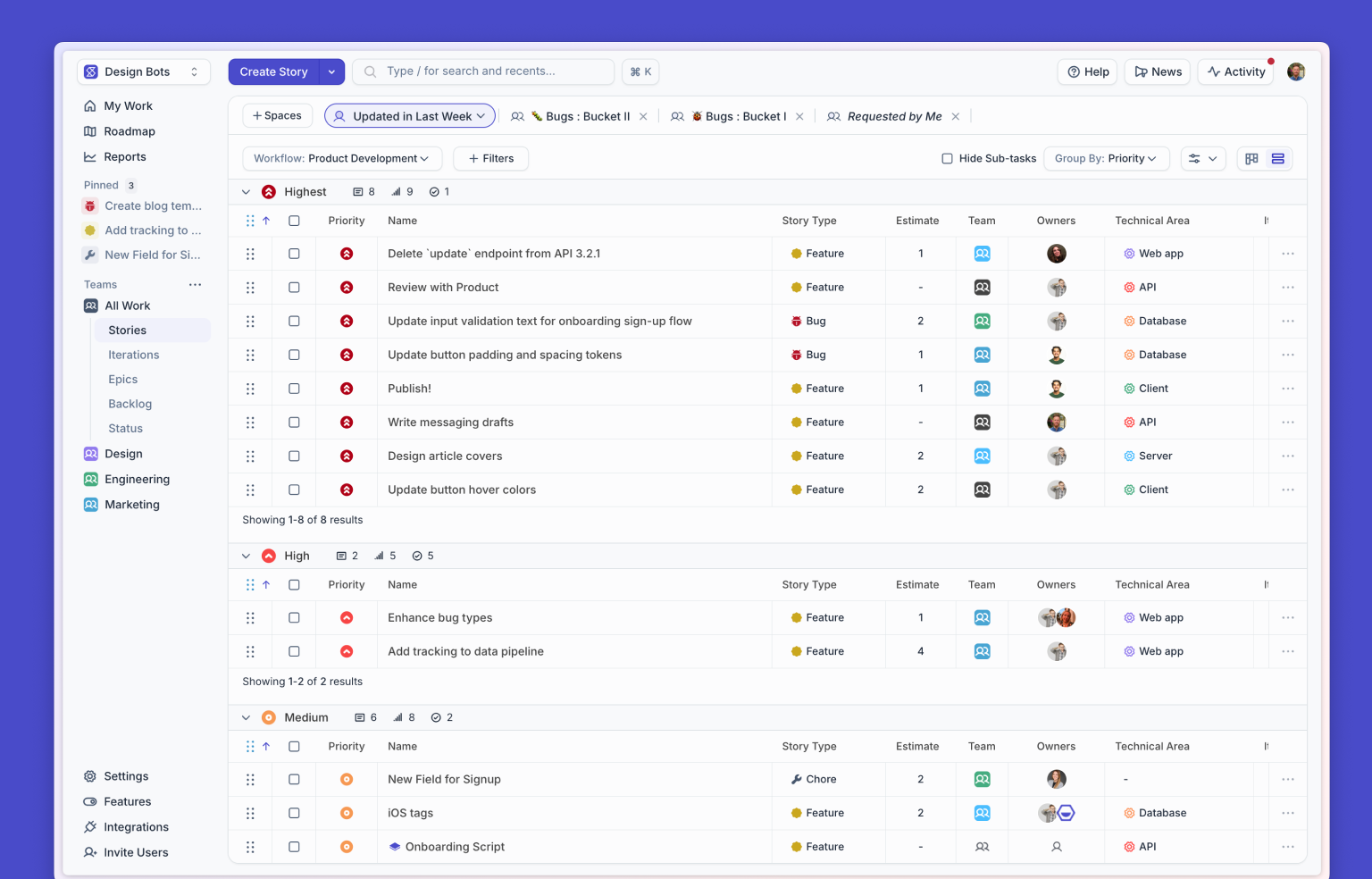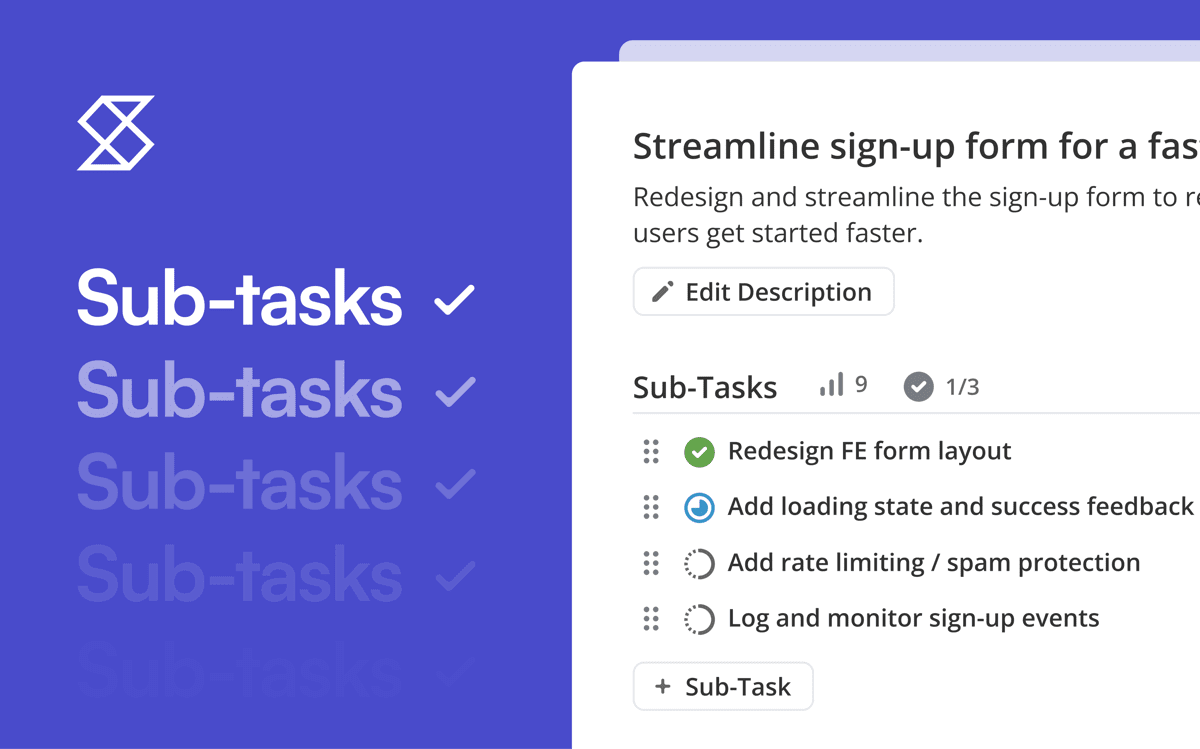Every team wants to be “aligned.” But if we’re being honest, that usually means:
A roadmap in one tool, a sprint board in another, and a spreadsheet trying to play matchmaker between them.
The result? Product teams talk about outcomes. Engineering talks about tickets. And somehow, your “Q4 roadmap” still includes goals from last spring.
There’s a better way to work. With the right setup, your roadmap and your sprints can finally speak the same language, automatically. No more double-entry, no more “is this on track?” meetings, and no more stale slides.
Let’s break down how alignment actually works (and which tools pull it off best).
Why Roadmap–Sprint Alignment Falls Apart
Most misalignment isn’t a people problem, it’s a systems problem.
- Different tools for different teams
Product uses one tool for planning, engineering another for execution, and the two rarely meet. - No shared structure
If “epic,” “project,” and “initiative” all mean different things across teams, your roadmap’s never going to match your sprints. - Manual updates (a.k.a. the death of freshness)
When progress lives in someone’s head or a weekly sync, your roadmap’s already out of date. - No shared view of progress
Product cares about the “why.” Engineering cares about the “how.” Without a shared layer in between, nobody sees the full picture.
🚨 Red Flags You’re Out of Sync
If you recognize these, you’re due for a tune-up:
- Sprints close, but roadmap goals never move.
- Roadmap updates only happen right before exec reviews.
- Engineers say “that’s not in this sprint.”
- Product says “but it’s on the roadmap.”
- The spreadsheet holding it all together has three owners and no formula anyone trusts.
What Good Alignment Actually Feels Like
Imagine this instead:
- Roadmap items roll right into Epics and Stories.
- Sprint progress is easy to find and understand.
- Everyone — from engineers to execs — can see what’s shipping this quarter in real time.
- Status updates post themselves (because they can).
That’s the moment you stop managing alignment and start experiencing it.
The Tools That Bring Roadmaps and Sprints Together
🥇 Shortcut: Where Roadmaps and Sprints Live Happily Ever After
Shortcut was built for this exact problem.
Objectives represent your higher level goals. Epics break those goals into deliverables. Stories represent a shippable scope of customer value. Sub-tasks capture the implementation steps of Stories.
As engineers close Sub-tasks and Stories, progress rolls up to the Epic and Objective — automatically. The roadmap stays current without a single spreadsheet or update meeting.
How It Looks in Practice
- Product creates an Objective → “Improve Onboarding Conversion.”
- Engineering links Epics → “Signup Flow Revamp,” “Trial Experience Improvements.”
- Stories go into upcoming sprints.
- PRs merge → Stories (and Sub-tasks) close → Epics progress → Roadmap updates in real time.
And when the sprint wraps, you can have Korey jump in to summarize:
🚀 Improve Onboarding Conversion
- 85% complete (up from 60% last sprint)
- Signup flow now live
- Next up: add trial analytics
No reports. No guessing. Just visibility that feels auto-magic.
The 3-Layer Alignment Model
To make alignment stick, structure your work like this:
When all three layers live in the same system (or sync seamlessly) your roadmap stops being a poster on the wall and starts being a reflection of real progress.
Shortcut does this by default. Korey makes it smarter.
How to Build This in Any Stack
Even if you’re using another setup, the principles hold:
- Define a shared hierarchy
Agree on what “goal → epic → story” means and stick to it. - Connect roadmap data to engineering data
Manual updates are alignment killers. Integrate or automate your updates. - Automate status changes
When work ships, roadmap progress should move automatically. - Review roadmap velocity, not just sprint velocity
Sprints are how you get there. The roadmap is what “there” actually means.
📊 What to Measure (and How to Read It)
Look for trends, not single sprints. If your roadmap progress and sprint velocity start diverging, that’s your cue to realign scope, not motivation.
Real-World Example: From Roadmap to Reality
Let’s say your Q1 goal is “Reduce Time to First Commit.”
- Product creates an Objective for that goal.
- Engineering creates Epics: “Streamline PR Reviews” and “Improve Dev Environment Setup.”
- Korey generates Stories from those Epics, writes acceptance criteria, and drops them into sprints.
- Engineers merge PRs → Stories close → Roadmap progress jumps automatically.
- At the end of the sprint, you ask Korey for a summary of how it went:
🧩 Objective: Reduce Time to First Commit
- 78% complete (up from 50%)
- Setup script Epic complete
- Remaining: PR reviewer automation
Your roadmap stays fresh. Your team stays aligned. Nobody’s chasing status updates.
How Korey Keeps It All Connected
Korey adds the AI layer that keeps context flowing between product and engineering:
- Creates structure: Turns roadmap goals into Epics and Stories automatically.
- Maintains visibility: Summarizes what changed each sprint, linking progress back to outcomes.
- Communicates clearly: Generates updates and release notes straight from your Shortcut workspace.
It’s like having a PM who never forgets to update the roadmap.
Shortcut + Korey: From Vision to Velocity
Together, Shortcut and Korey eliminate the friction between planning and delivery.
- Product defines why.
- Engineering executes how.
- Korey connects the dots in between — automatically.
No syncing. No spreadsheet purgatory. Just real alignment, the way it should be.
👉 Try Shortcut for free
👉 Meet Korey
FAQ
How do I keep my roadmap accurate during fast sprints?
Use a tool where progress rolls up automatically. Shortcut’s Objectives and Epics update as Stories close.
Can AI really help connect roadmaps and sprints?
Yes. Korey creates structured Epics from rough notes, roadmap goals and summarizes progress and provides insights.
Do I need a separate roadmap tool?
Not if you’re using Shortcut. You can plan, track, and report in one place without syncing or spreadsheets.
What’s the best metric for alignment?
Objective progress. If it’s moving consistently, your roadmap and sprints are speaking the same language.














.png)


%20(788%20x%20492%20px)%20(1).png)
.png)

